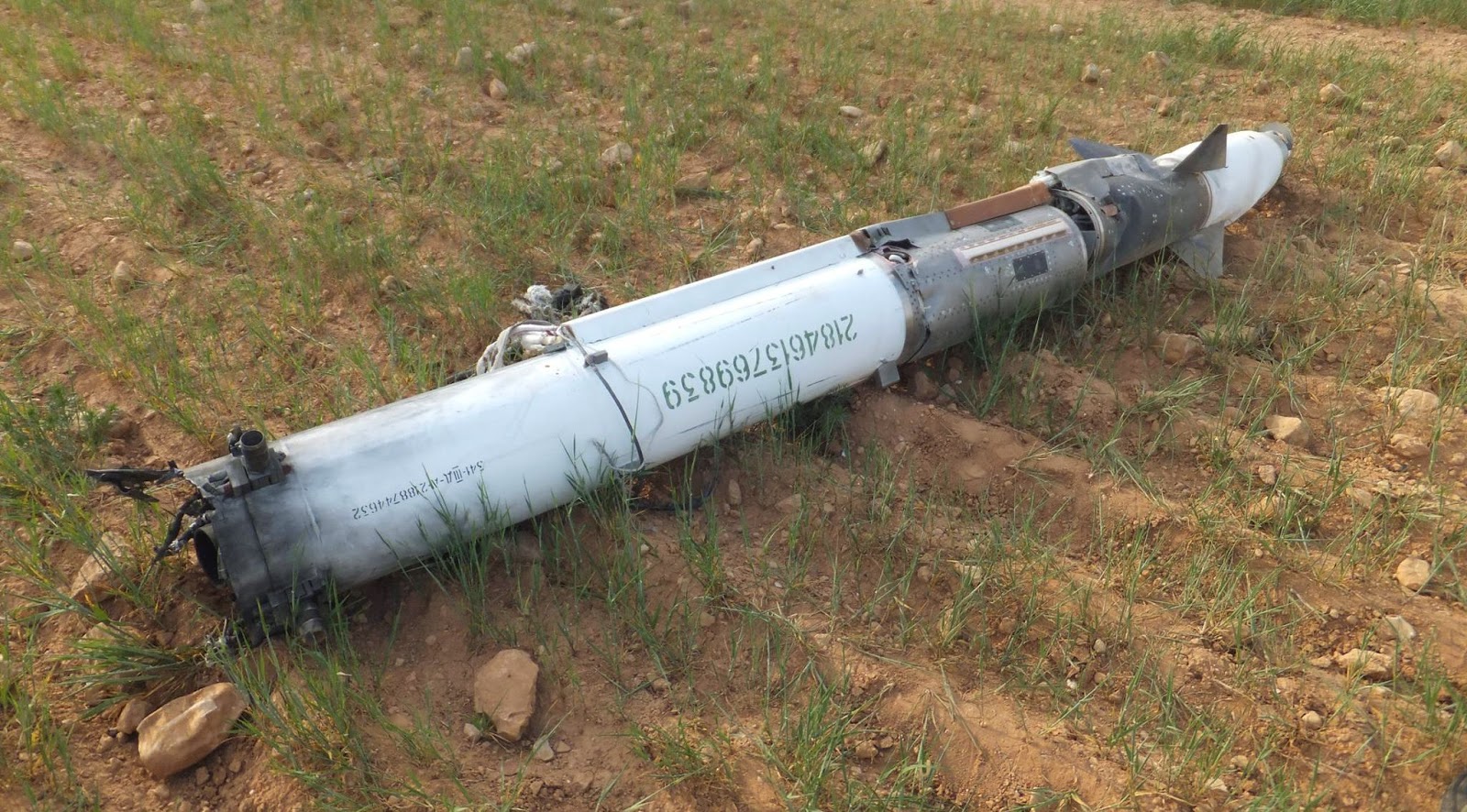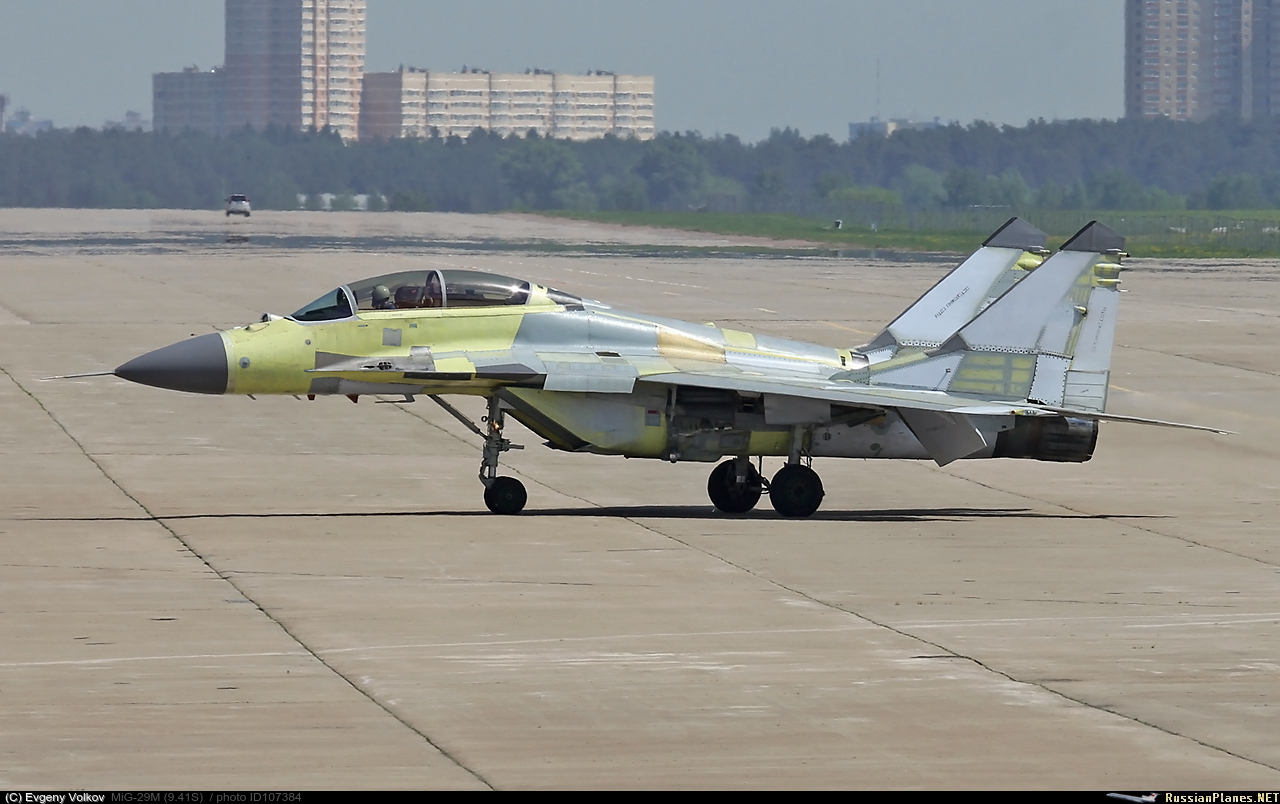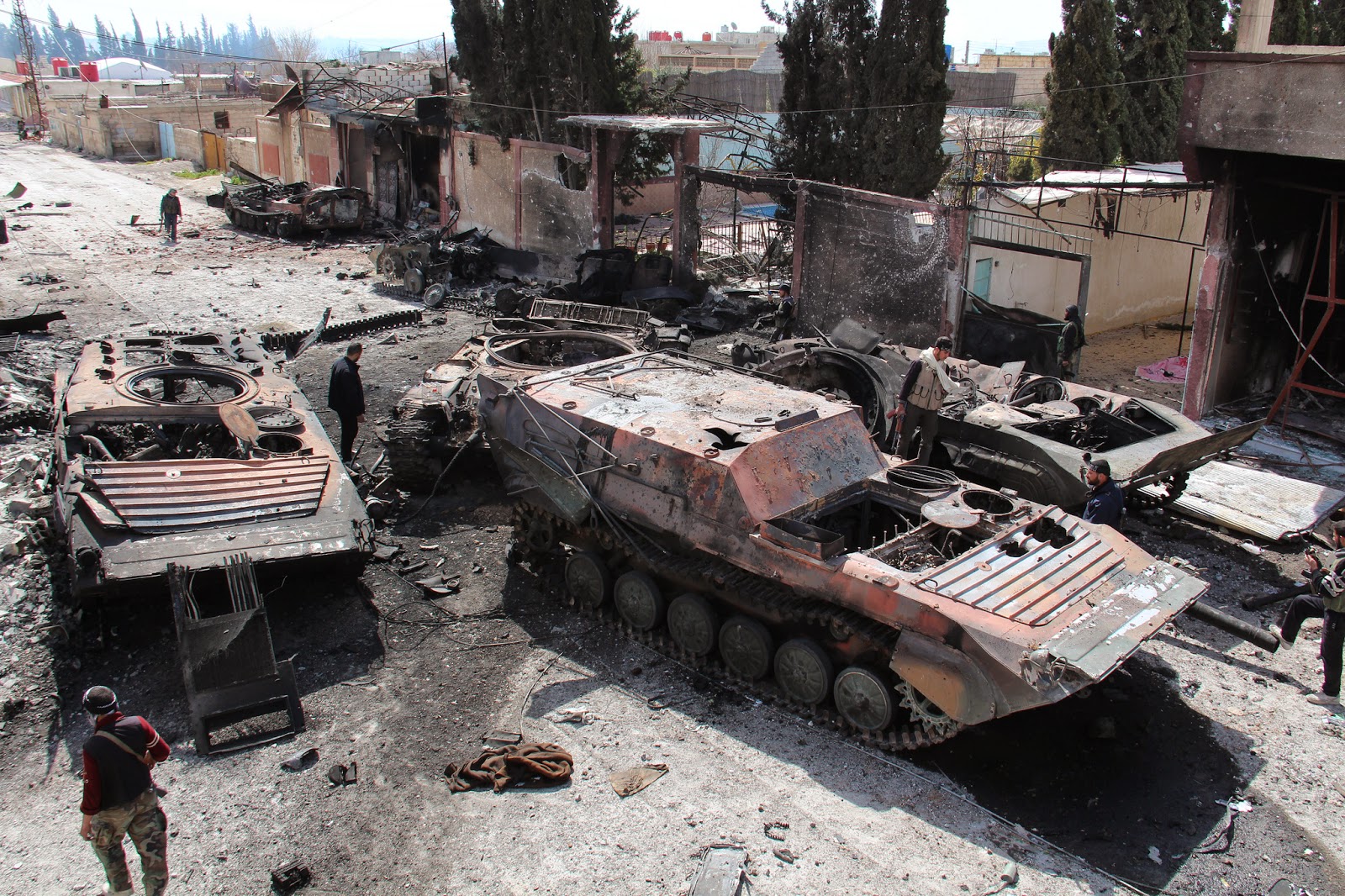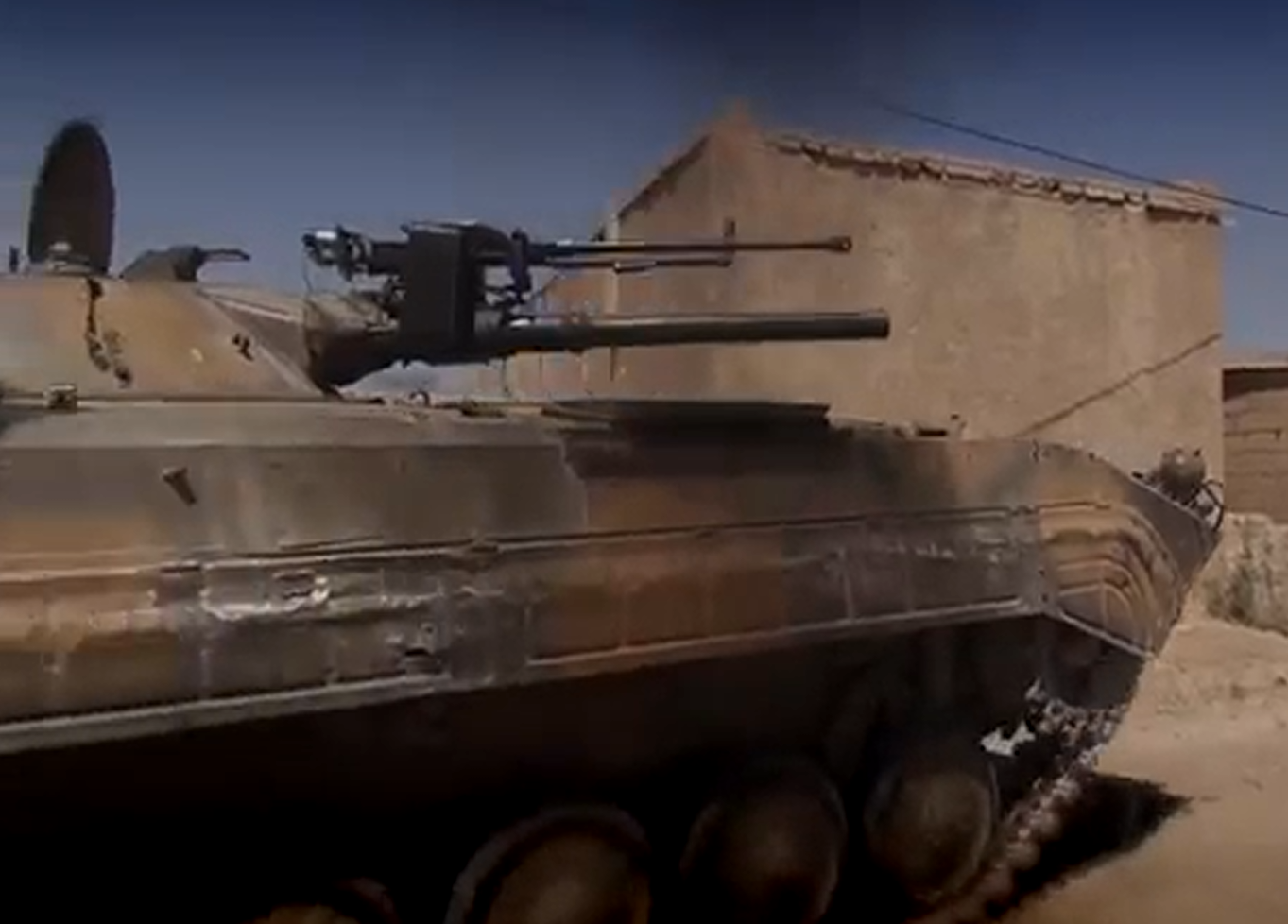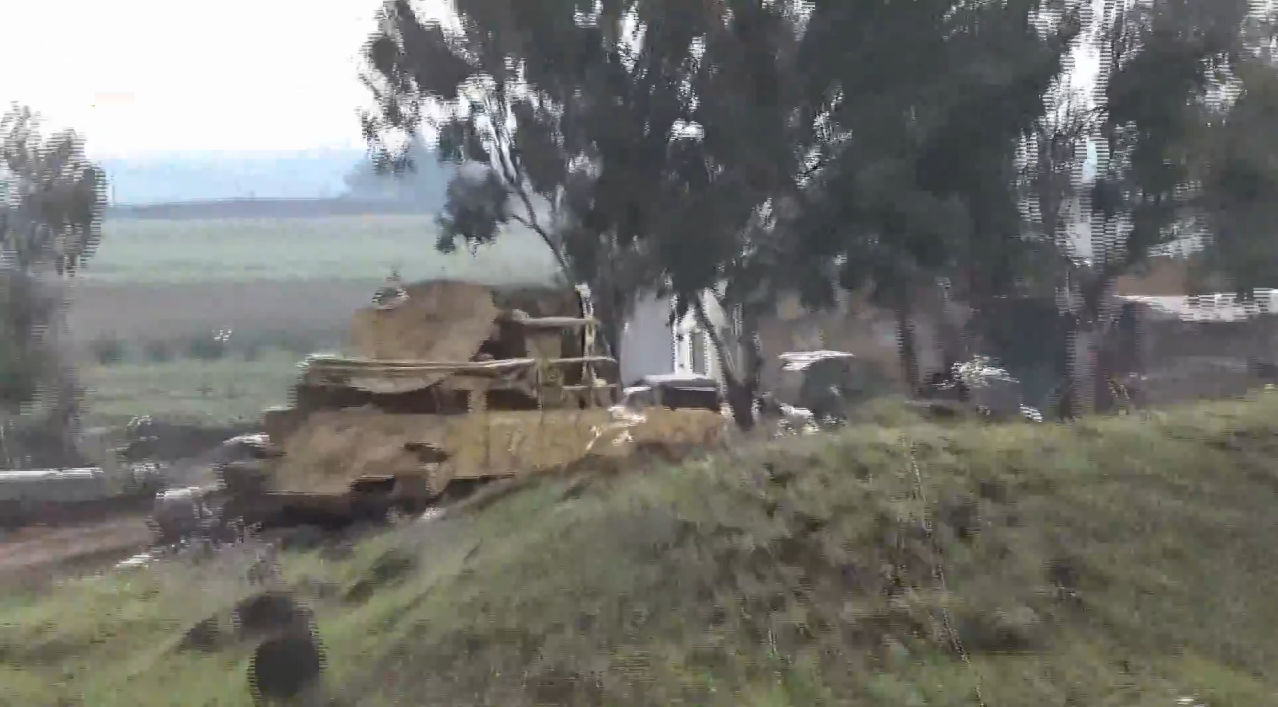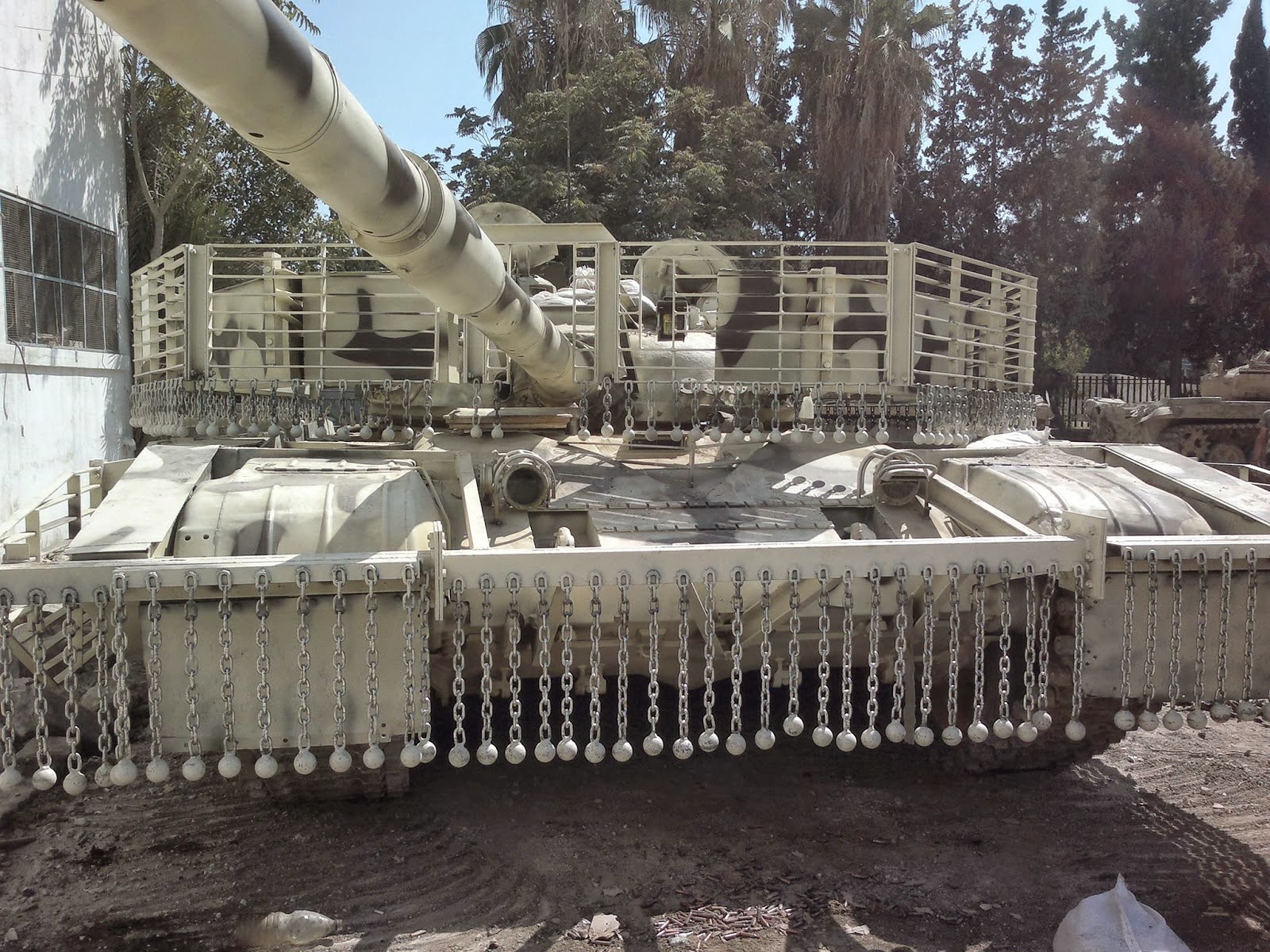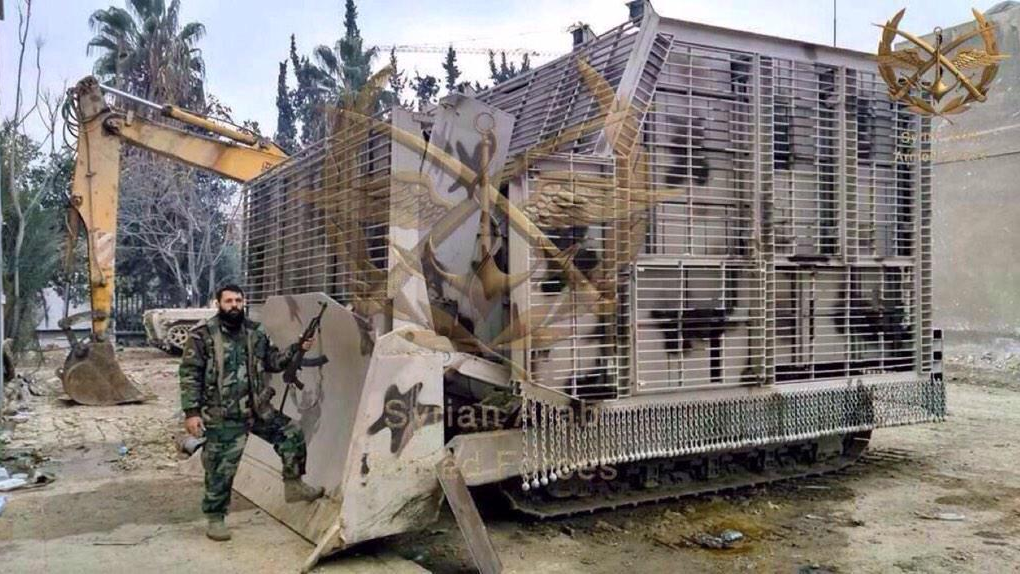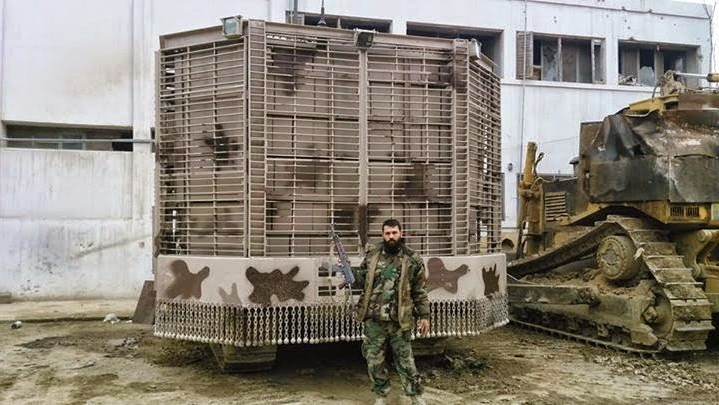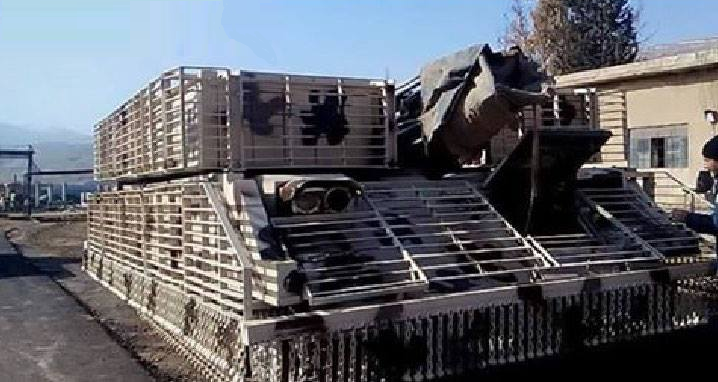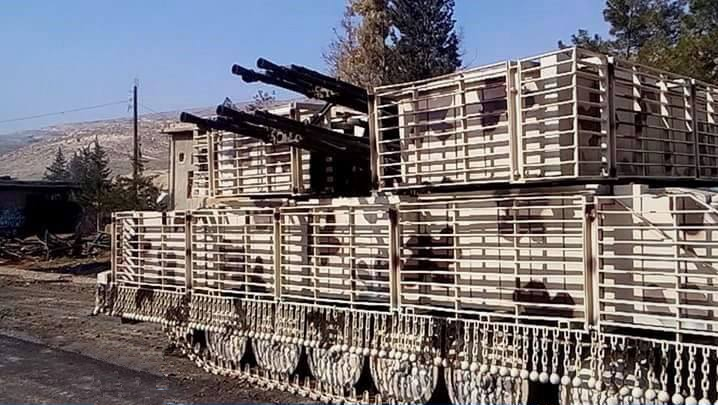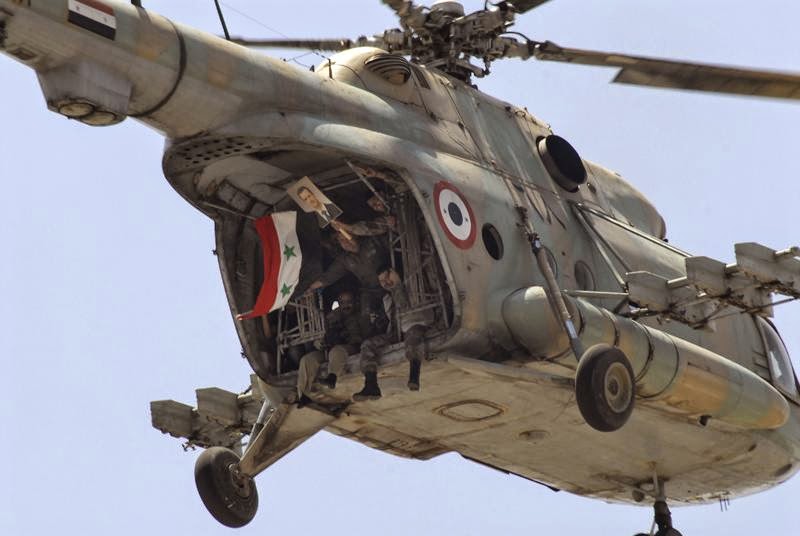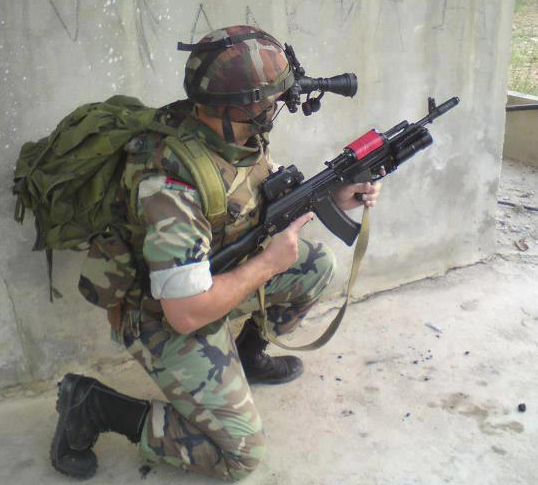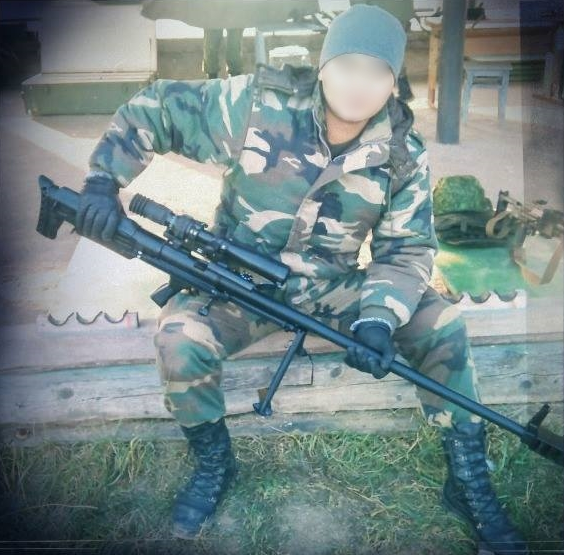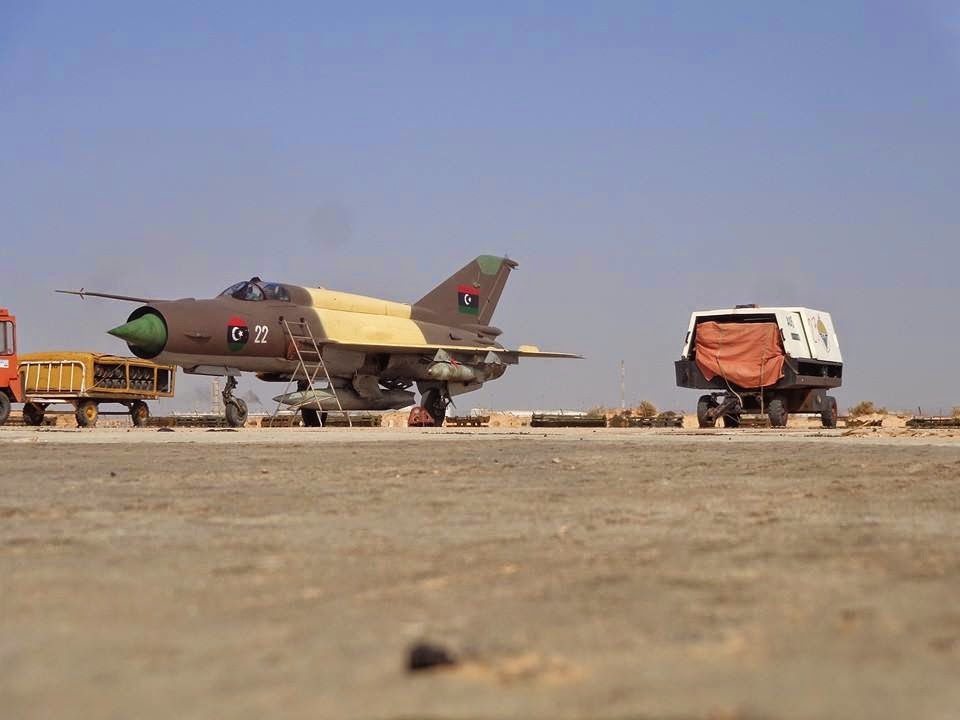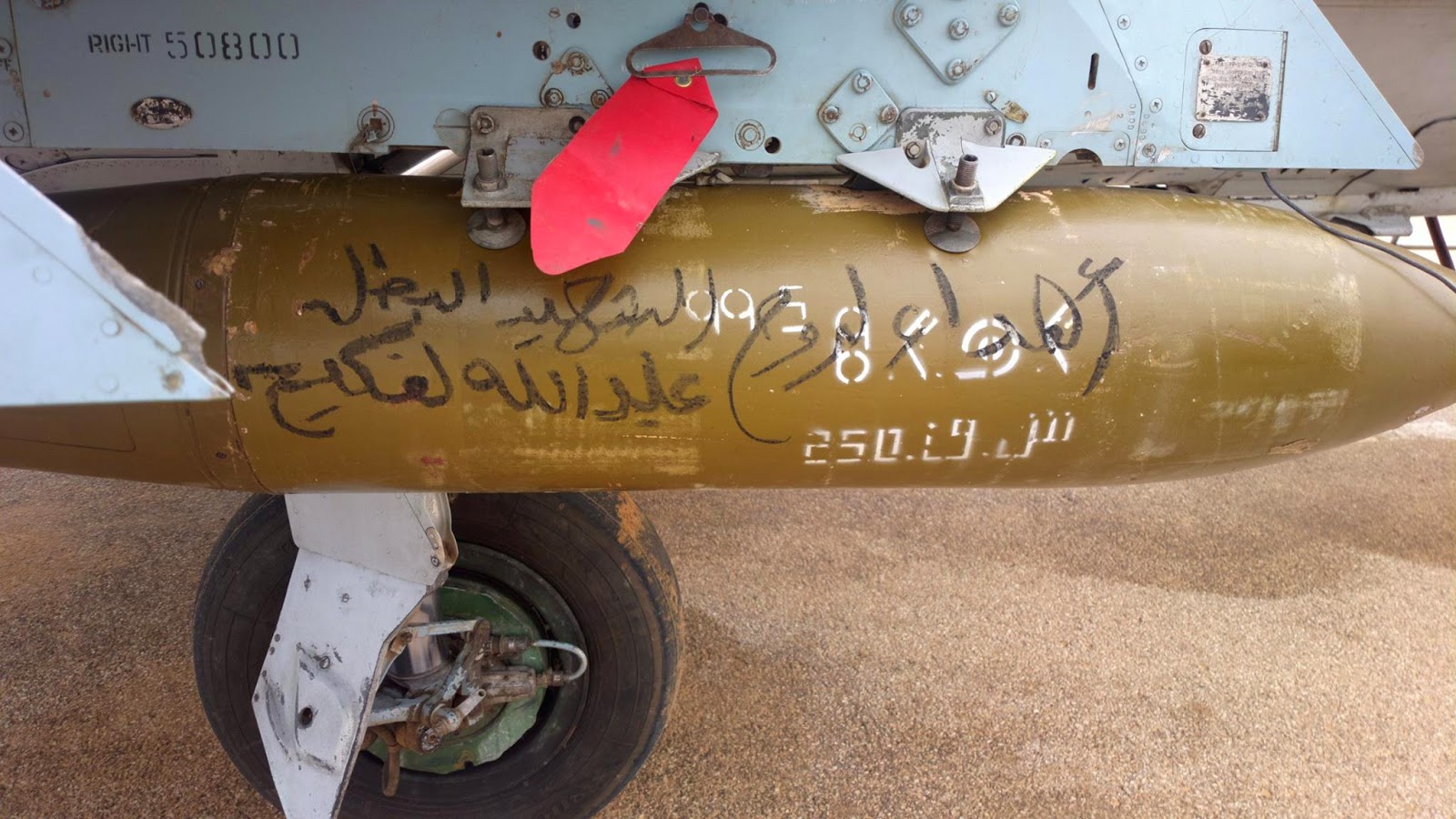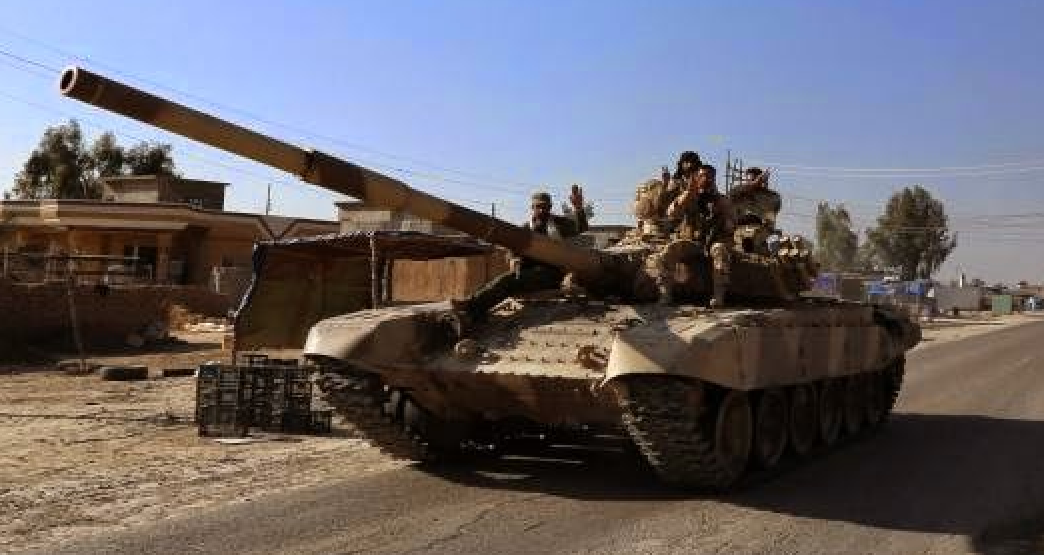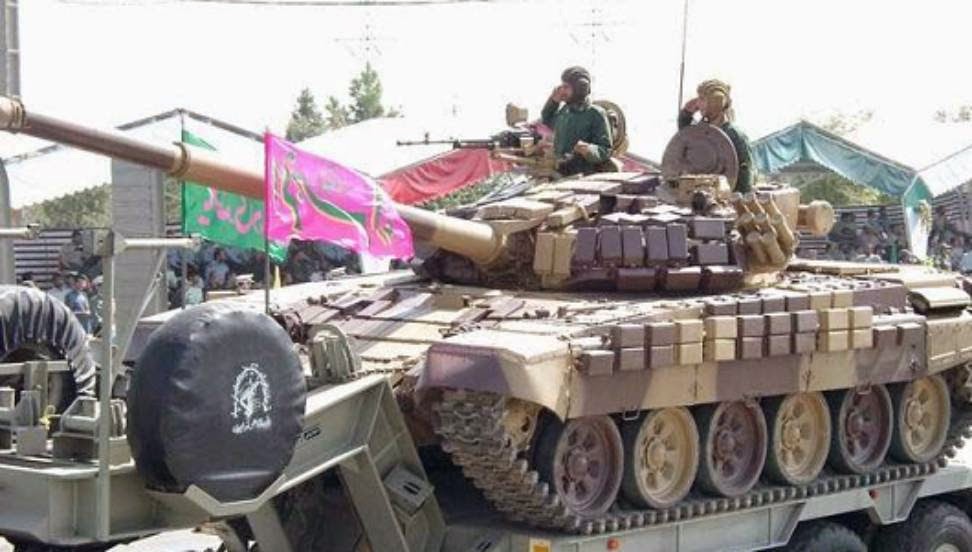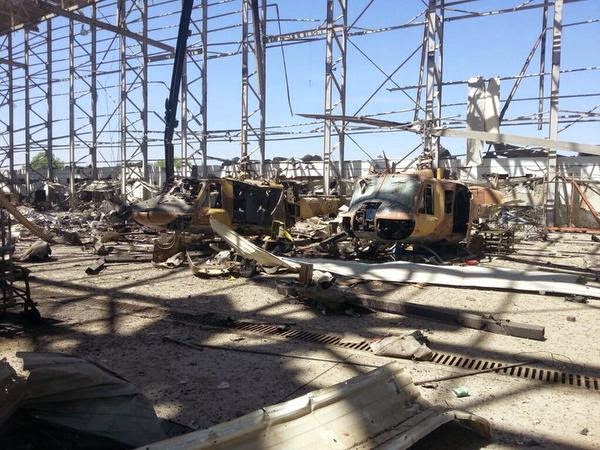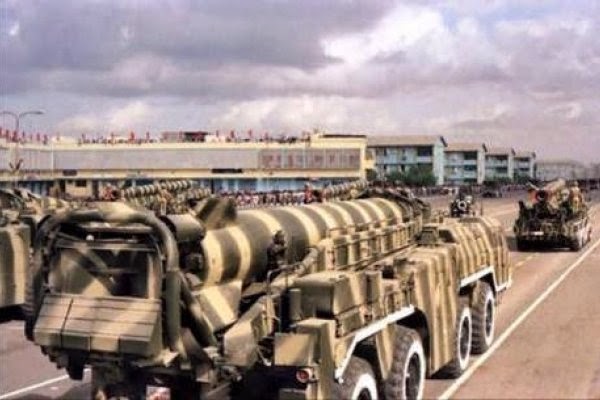To everyone's surprise, the Syrian Arab Air Force (SyAAF), often incorrectly abbreviated to SAF or SAAF, has been able to maintain a high pace of operations in the now almost four-year long war. Orginally destined to engage in a fierce but short war with Israel, it never anticipated to fight what is essentially a war of attrition between the Assad-led party and its adversaries, and has found its role in the conflict through trial and error. The SyAAF saw a large part of its aircraft and helicopters upgraded in the Ukraine and Russia before and during the Syrian Civil War, and as all aircraft were safely returned, the SyAAF has been able to enjoy a "fresh start".
Apart from some negligible combat missions in the early days of the revolution, it was only in the end of July 2012 that the SyAAF became actively involved in suppressing the rebellion. This was done mostly by deploying L-39ZAs on bombing runs over Aleppo and its suburbs. These sorties resulted mostly in civilian targets such as hospitals and schools being hit, and unsurprisingly led to numerous civilian casualties. The months that followed saw MiG-21s, MiG-23BNs, Su-22s and a limited number of Su-24s also joining the fray, leading to a far increased amount of sorties throughout the country. The number of L-39 sorties gradually decreased over time however, and completely came to a halt in May 2013.
![]()
The first setback occurred on the 25th of November 2012, when
Majr as-Sultan heliport was overrun, resulting in the capture and destruction of five Mi-8/17s. This was followed by the fall of
Taftanaz on the 11th of January 2013, which saw at least fifteen Mi-8/17s and one Mi-25 being captured or destroyed. Next in line was
Kshesh(commonly known as Jirah) on the 12th of February 2013, which apart from more than fifty inoperational MiG-15/17s and L-29s gave the rebels an opportunity to work on establishing their own air force, as at least eight intact L-39s were capture. This opportunity was later
utilised by Jaish al-Islam. Dhab'ah (commonly known as Al-Qusayr) was captured on the 18th of April, and although several MiG-21s were found here, all were inoperational. Stocks of air-to-air missiles found here were later used as provisional rockets by the rebels. Abu ad-Duhor was stormed on the 30th of April 2013, but the defenders managed to fence off the assault. This marked a turning point in the rebels' advances on SyAAF airbases, all of which subsequently came to a halt. Only the already surrounded heliport of Mennegh fell on the 6th of August 2013, where several Mi-8s were captured or destroyed. The latest airbase that fell was Tabqa on the 24th of August 2014. As much as eighteen MiG-21s, ranging from operational examples to piles of scrap, were captured by the Islamic State here. Of these eighteen only three were in operational condition as the few remaining airworthy MiG-21s escaped Tabqa before the base was given up.As Kshesh and Mennegh were used for the training of fighter pilots and helicopter pilots respectively, their capture greatly hindered the training of future pilots. The complete encirclement of Kweres, the SyAAF's main training base, made matters only worse for the SyAAF. Apart from the several aircraft captured or destroyed at their home bases mentioned above, losses during this time were limited to five MiG-21s, two MiG-23s, one Su-24M2, two L-39s and six Mi-8/17s. And although these losses would gradually increase over time, they failed to hurt the SyAAF just yet. Much more worrisome for the SyAAF was the increased amount of sorties that had to be undertaken by its fighter-bombers each day. Most of Syria's MiG-21s date from the early seventies, the MiG-23BNs were all manufactured in the late seventies and the Su-22M-3/M-4 fleet dates from the eighties. Apart from the Su-22M-4, all were nearing the end of their lifecycle and were destined for replacement in this decade. Instead of enjoying their last few years in calmness, these aircraft now found itself at the forefront of the fight.![]() This was much less of a problem for the now twenty-strong Su-24 fleet, which forms the core of the SyAAF's fighter-bomber department and are considered to be the pride of the SyAAF. Twenty Su-24MKs were ordered from the Soviet Union in 1988 and delivered in 1990 and one Su-24MK and one Su-24MR were donated by Libya in the mid 1990s. Just in time to participate in the Civil War, the twenty-one Su-24MKs were upgraded to M2 standard by the 514 ARZ Aircraft Repair Plant in Rzhev in Russia between 2010 and 2013. The M2 upgrade brought the Su-24s on the same standard as the Russian Su-24M2. The upgrade provides for improved targeting, navigation and fire control systems by replacing the plane's old control systems. The plane was also made compatible with newer versions of the KAB-500/1500 and for Kh-31As, Kh-31Ps, Kh-59s and R-73s, adding to theFAB, OFAB and RBK bombs, Kh-25s, Kh-29Ls, Kh-29Ts, Kh-31s and Kh-58s guided missiles, KAB-500s and KAB-1500s guided bombs, S-24 and S-25 air to ground rockets, rocket pods and R-60 air-to-air missiles already carried.
This was much less of a problem for the now twenty-strong Su-24 fleet, which forms the core of the SyAAF's fighter-bomber department and are considered to be the pride of the SyAAF. Twenty Su-24MKs were ordered from the Soviet Union in 1988 and delivered in 1990 and one Su-24MK and one Su-24MR were donated by Libya in the mid 1990s. Just in time to participate in the Civil War, the twenty-one Su-24MKs were upgraded to M2 standard by the 514 ARZ Aircraft Repair Plant in Rzhev in Russia between 2010 and 2013. The M2 upgrade brought the Su-24s on the same standard as the Russian Su-24M2. The upgrade provides for improved targeting, navigation and fire control systems by replacing the plane's old control systems. The plane was also made compatible with newer versions of the KAB-500/1500 and for Kh-31As, Kh-31Ps, Kh-59s and R-73s, adding to theFAB, OFAB and RBK bombs, Kh-25s, Kh-29Ls, Kh-29Ts, Kh-31s and Kh-58s guided missiles, KAB-500s and KAB-1500s guided bombs, S-24 and S-25 air to ground rockets, rocket pods and R-60 air-to-air missiles already carried.
While the upgrade was supposed to 'stay below the radar', 514 ARZ workers publicly speaking about the presence of Syrian Su-24s at this plant, satellite imagery footage of Rzhev showing Syrian Su-24s and an image of a Syrian Su-24 being worked upon on the 514 ARZ's official website did not work in its favour.Back to the battered fighter-bomber fleet, which saw its target lists growing while the number of operational airframes continued dwindling. However, the then-imminent collapse of the SyAAF's fighter-bomber fleet curiously never took place, leading to the conclusion Syria can still count on spare parts from Russia to keep its aircraft operational. This theory is strengthened by the upgrade of MiG-23MLDs, MiG-29SMs, Su-24M2s, Mi-25s and Ka-28s in Russia and the Ukraine (with after-sale support likely to have been included in the deals), the Russian Aircraft Corporation MiG opening an office near Mezze airbase in Damascus, the transition to a more modern maintenance system with help of Russian Aircraft Corporation MiG, the large flow of Russian arms that still reaches Syria every month and the regular sighting of the SyAAF's Il-76s in Russia. Although in Syrian Air colours, the Il-76s are de-facto under air force command.
SyAAF personnel, along with numerous soldiers and officers of the Syrian Arab Army and Republican Guard, continue their training in Russia. A SyAAF pilot can be seen in front of a Russian MiG-29 below.
The first case of continuing weapon deliveries to the SyAAF became apparent in October 2013, when Mi-25s, MiG-29s and Su-22s employed B-8 rockets pods for the first time. The 80mm S-8 rockets fired from the B-8s already hit the Lebanese village of Arsal in June 2013, which marked the first use of the S-8s by the SyAAF. The Mi-25 and fighter-bomber fleet was until then still armed with UB-32 rocket pods using 57mm S-5 rockets, which lacked the penetration and firepower to destroy housing or personnel in cover.
![]()
The presence of B-8 armed MiG-29s usually indicated an absence of larger numbers of the wearing MiG-23BN or Su-22M-3/M-4 fleet, which has to be overhauled regularly in order to keep the aircraft operational. Temporarily grounding large amounts of its fighter-bombers to have them replaced by fighters has become a standard tactic within the SyAAF, and allows for some much needed rest for certain airframes. For example, during November 2014 not a single Su-22 was spotted over Syria, as increasing numbers are temporarily grounded or even completely phased out, as witnessed by the growing Su-22 graveyard at
Dmeyr.
[1]This tactic allows the SyAAF to maintain a high number of sorties without putting all the burden on the MiG-23BNs and Su-22M-3/M-4s. Although MiG-29s regularly got involved in replacing some of the fighter-bombers from late 2013, the MiG-29s rarely take part in the Civil War nowadays. Only a few MiG-29s appear to be used to deliver precision-guided munitions (PGMs) throughout Syria.
Instead, the SyAAF's MiG-23MF and in lesser extent the MiG-23ML and MiG-23MLD fighters began flying air-to-ground sorties over Syria. Mostly armed with two UB-16 and two UB-32 rocket pods, two B-8 rocket pods or iron bombs, they joined the MiG-23BNs and Su-22M-3/M-4s over the Syrian sky. As Syria still operates plenty of MiG-23MFs, MiG-23MLs and MiG-23MLDs, this tactic can easily be continued in the upcoming years.
A part of the MiG-23ML and MiG-23MLD fleet was upgraded in the Ukraine and Russia from 2008 until 2011 or 2012, and all aircraft returned to Syria virtually unnoticed in the same year. While the world was busy trying to stop a freighter carrying three Mi-25s returning from an overhaul in Russia, several batches of MiG-23s, MiG-29s and Su-24s entered Syria without any media attention: tunnel vision and hypocrisy at its finest. One of the MiG-23MLDs (lacking chaff/flare launchers) overhauled abroad can be seen below.
Unknown to many, the MiG-23 fleet was reinforced by some thirty examples in the past few years. Thirty-three MiG-23s, comprimising around thirty MiG-23MLDs and a few MiG-23UBs, were delivered by Belarus to Aleppo IAP/Neyrab airbase in 2008. While at first the intention of the deal was unclear, it soon appeared all were to be overhauled by 'The Factory', the SyAAF's overhaul and maintenance facility at this airbase.
Four MiG-23s were deemed unsuitable for overhaul because of their bad condition and remained at Neyrab, and two of them were struck by TOW ATGMs here.
[2][3] As these aircraft were destined to never fly again, these strikes serve little purpose.
'The Factory', as it's known as within the ranks of the SyAAF, is responsible for overhauling and maintaining the SyAAF's combat and helicopter fleet. All of Syria's combat aircraft, except for the Su-24, have been overhauled here. 'The Factory' also produces indigenously designed chaff/flare launchers for on the SyAAF's MiG-21s, MiG-23s and Su-22s. After finishing its overhaul, the aircraft or helicopter in question gets the
factory's logo applied to it. With Neyrab in ATGM range, movement of aircraft is now limited. Two freshly overhauled L-39s were recently destroyed by a TOW missile
[4], once again showing the vulnerability of the airbase. While Neyrab even used to overhaul MiG-29s in the past, it is obvious the security situation doesn't allow the SyAAF's most advanced aircraft to be maintained here.
Nonetheless, Syria's MiG-29s have always been heavily reliant on foreign assistance to remain operational. Reportedly, this assistance also included help in solving cracks in the fuselage and wings. A number of MiG-29s also received a new camouflage pattern during overhaul at 'The Factory' at Neyrab Airbase. The total number of MiG-29s acquired by Syria in 1988 still remains somewhat of a mystery. The much-reported claim of forty-eight is likely to have been exaggerated, and only twenty-two to twenty-four are actually believed to have been delivered. Although this was enough to equip one squadron, plans for a second squadron with these fighters had to be shelved. Around fifteen to twenty MiG-29s should still be operational with 697 Squadron based at
Seen (commonly
known as Sayqal). A few planes are permanently detached to
T4 (commonly
known as Tiyas) airbase.
Russian Aircraft Corporation MiG continues to actively fulfill its contractual agreements with Syria (designated as customer 760). August 2010 saw the delivery of four flight simulators of an unknown type under contract number '776041110116'. In a secret agreement fulfilled in 2011 four SyAAF MiG-29B were upgraded to MiG-29SM standard, adding to Syria's airborne ground attack capabilities. As the MiG-29B uses the 9-12 airframe which differs from the MiG-29SM's 9-13M airframe, Mikoyan developed a special variant (likely lacking the Gardenia jammer) to suit Syria's needs, as it did for India with the MiG-29UPG.
The development of this variant cost a total of 531,1 million Russian rubles, as opposed to the 925,7 million rubles used for developing the MiG-29UPG. Mikoyan's 2011 report containing information about the upgrade was taken down and later re-uploaded with the information about the recipient of this deal, Syria, removed, emphasising the secretive nature of the deal.
![]()
The MiG-29SM features many improvements over the MiG-29B, such as an upgraded N-019ME radar, the capability to carry a larger payload and many more smaller upgrades to cockpit displays and navigational and communication systems. Arguably the most important upgrade, considering the MiG-29's current use in Syria, comes in the form of an expanded arsenal of air-to-ground weaponry, such as the Kh-29T(E), Kh-31A/P missiles and KAB-500-Kr/OD guided bombs. Delivery of these weapons was included in the MiG-29SM contract.
Lastely it enables the aircraft to carry the dreaded R-77 (AA-12 'Adder') air-to-air missile, which poses a considerable threat to foreign aircraft intervening in the conflict. MiG-29s have already been spotted in Syria carrying the AKU-170E launch rails used to carry this missile, as seen in the image below.
![]()
Yet another two deals included the repair of Syrian MiG-23MLDs and the transition to a more modern maintenance system. Traditionally, Soviet aircraft have to undergo checks, maintenance and overhauls after a certain amount of time. Certain aircraft components qualified for only a certain amount of time are usually removed during such overhauls. During recent times, a more modern maintenance system came into use, enabling certain components to continue use if deemed to be still in working order after passing a certain amount of time. The Russian Aircraft Corporation MiG aided the SyAAF in transitioning to this more modern maintenance system in 2009. This couldn't have come at a better time for the SyAAF, as they greatly benefit from this new maintenance system in the Civil War.
This deal, along with the delivery of around thirty Belarussian MiG-23MLDs proves the SyAAF still relies heavily on these aircraft. One of the overhauled ex-Belarusian MiG-23MLDs equipped with chaff/flare launchers can be seen in the image below.
After two L-39s were struck at Meyrab air base, at least one L-39 was deployed to Deir ez-Zor where it took part in the counter-offensive against the Islamic State. As the L-39s are easy to operate and maintain, they can be easily deployed throughout Syria. The L-39 seen below was also recently overhauled at 'The Factory', where it received a new coat of paint.
Several L-39s were also wired for the carriage of the recently delivered 80mm B-8 rocket pods, a weapon not supported by the original L-39. A B-8 equipped L-39ZO deployed at Hama airbase can be seen below.
While the L-39s saw much action in the early stages of the Syrian Civil War, one of its bases was overrun by Jaish al-Islam, which later
attempted to get at least four L-39s based at Kshesh operational. This project was supposedly continued by the Islamic State after their capture of the airbase.
[5]Bashar al-Assad's regime then cleverly used this news report for its own gains, and went on to claim the Syrian Arab Army had destroyed both aircraft on the ground.
[6]"Regarding ... that terrorists control three jets in al-Jarrah military air base in Aleppo, there are three old aircraft that the terrorists were testing so the Syrian Arab Army immediately destroyed two of them on the runway as they were landing."As the Syrian Arab Army has no presence anywhere close to Kshesh, any action against the Islamic State's aircraft should have been carried out by the SyAAF. But as Kshesh is littered with around sixty plane wrecks, it is highly unlikely the SyAAF ever managed to find or hit the aircaft, which spend most of their time hidden in a Hardened Aircraft Shelter anyway. While the presence of two operational L-39s in rebel hands was already known back in November 2013, it was completely ignored by the SyAAF. Around a year later, when the Islamic State was reportedly working on getting the two L-39s operational again, these aircraft suddenly became a priority target. A great PR stunt nonetheless.
Two of the L-39s in question can be seen below, shortly after their capture by the Islamic State.
Syria's most iconic interceptor, the MiG-25, hasn't seen much action in the past couple of years however. The exact number of MiG-25s delivered remains unknown but is thought to be around forty. Versions are believed to include MiG-25P (later upgraded to MiG-25PDS) and MiG-25PD interceptors, MiG-25R and RB reconnaissance aircraft and MiG-25PU conversion trainers. Much of the mighty MiG-25 fleet was phased out by 2011, with as much as twenty-eight decommissioned MiG-25s visible at T4 in November 2013. A part of the fleet has been towed into the desert, suggesting most are never to fly again. A reason for the mass-retirement of the MiG-25 fleet might be the type's vulnerability to Israeli jamming.
Nevertheless,
a video released by rebels on the 8th of August 2012 confirmed some MiG-25s might still be operational at
Tadmor (commonly known as Palmyra). The MiG-25s reappeared in March 2014, and again in April 2014, during which a MiG-25PD(S) fired two infrared homing R-40TD air-to-air missiles at the village of Aqaribat in the Hama Governorate. The first R-40 failed to detonate after hitting the ground while the second R-40 exploded in mid-air at around five kilometers distance from the other one. A week later, other MiG-25s launched four other R-40s, then four more launches followed in the same period. While the practice of launching R-40 air-to-air missiles at ground targets was already reported in 2013, it yielded the same results at every launch: a failure. What the SyAAF hoped to achieve here will always remain a question.
![]()
Meanwhile, it is getting more likely the SyAAF recently received, or was already in the possession of multiple ejector racks (MERs) for its MiG-25RBs. When equipped with such racks, MiG-25RBs are able to deploy up to eight FAB-500Ts for bombing sorties, albeit with bad accuracy. However, with sufficient numbers of MiG-25RBs at hand, such sorties could replace the Su-24M2s currently used for this task as accuracy does not seem to be of much importance during these strikes.
Eye-witness accounts on the ground already reported the use of a new aircraft in the Syrian Civil War. Although called a Su-25 here, it is more likely they were looking at a MiG-25 here
[7]:
'Over the past two days, regime air force conducted several air raids using what appears to be the new Su-25s, which fire from a very high altitude....
They also fly for a longer period and fire from 5 km altitude, making it almost impossible to target them....
He added that Syrian Arab Army soldiers at checkpoints surrounding the town of Khan al-Sheeh خان الشيح gloatingly asked women who pass by "Did you like the new warplanes?''In short, several MiG-25PD(S) interceptors, MiG-25RB reconnaissance-bombers and associated MiG-25PU trainers are likely to be still be in use with the SyAAF. A pre-civil war photograph of a MiG-25PD(S) interceptor armed with two R-40s can be seen in the image below.
Contrary to the fixed-wing fleet, the helicopter fleet doesn't enjoy the same luxurious position to rotate different squadrons and aircraft. Surviving Mi-8 and Mi-17s find themselves performing every task from supplying besieged Syrian Arab Army garrisons with food, weapons and munitions to dropping barrel bombs over towns, which started in August 2012.
Heavy attrition has meant that the surviving helicopters have to work even harder, and although this is exactly what the Mi-8s and Mi-17s were originally designed for, one can see their versatile tasks leaves little time for repainting.
The Mi-25 fleet largely remains intact and sees sporadic use throughout Syria. Two Mi-25s were detached to Tabqa in an effort to maintain control of this strategical airbase. While the Mi-25s were highly successful in striking convoys and positions of fighters of the Islamic State, Tabqa was already lost when it became completely encircled. Some twenty Mi-25s are still believed to be operational with 767 Squadron and another unknown Squadron based at
Bley (commonly known as Marj Ruhayyil). Several Mi-25s are permanently detached to other airbases however.
The Mi-14s and Ka-28s have found little use in the conflict. As both were designed to hunt and destroy submarines or perform search and rescue duties, their use in the Civil War has until now been limited.
Mi-14s did take part in the dropping of SADAF-02 naval mines over Syria on several occasions, possibly in an effort to test if they would explode on impact.
[8]Unsurprisingly, this project yielded the same results as the R-40 fiasco did. Several Mi-14s recently joined the Mi-8/17s in bombing villages in an effort to partially relieve the dwindling Mi-8/17 fleet from this task.
[9]A Mi-14 was also used to transport the coffin of a SyAAF pilot (KIA) to his burial. Although the SyAAF's helicopters regularly take part in flypasts in commemoration of fallen SyAAF pilots over their families houses, this was uncommon even for SyAAF standards. Six Mi-14s and four Ka-28s (of which two recently overhauled in the Ukraine) are still believed to be operational with 618 Squadron based out of
Hmeemeem/Bassel al-Assad IAP.
The defence of Tabqa also saw the combat debut of the SA-342 'Gazelle', which were only used on a limited amount of reconnaissance missions until then. The open desert surrounding the airbase proved to be the perfect combat environment for these helicopers. Armed with HOT missiles, they saw heavy action against vehicles of the Islamic State. Around ten SA-342s are still believed to be operational with 976 Squadron based at
Mezze, with a few helicopters permanently detached to other airbases. It is likely several SA-342s operate out of T4 in aid of Suqur al-Sahara (Desert Falcons) combating fighters of the Islamic State in the nearby desert.
An overview of Syria's airbases can be seen below. Map made by
Luftwaffe A.S.Most airbases currently have at least one or two Mi-8/17 sassigned to them, which makes the current organisation of the helicopter squadrons incredibly hard to find out. Almost all of the SyAAF's Squadrons currently have several of their aircraft detached to other airbases. Nevertheless, the SyAAF's order of battle (ORBAT) can be seen below.
(Click on the aircraft to get an image of them in Syrian service. Click on the airbases to view them in Wikimapia)
Airbase and runway lenght in feet | Squadron | Types of Aircraft |
9,900 feet | 678 Squadron
? Squadron | 20x HAS. Several Mi-8/17s present. |
| 767 Squadron ? Squadron | 24x HAS, 26x Helicopter hardstands. |
11.800 feet | 522 Squadron 565 Squadron 575 Squadron 585 Squadron | 16x HAS |
11.000 feet | | 4x HAS Several Mi-8/17s and about a dozen inoperational MiG-21s can be observed here. L-39s and sometimes MiG-23BNs based here |
10.335 feet | 54 Squadron ? Squadron ? Squadron
| 42x HAS, 10 sheds. Used to house several MiG-25s. |
| 9.232 feet | 679 Squadron | 16x HAS. Several L-39s present. SAA BM-30s also based here. |
| 9,177 feet | 618 Squadron | |
9.925 feet | 945 Squadron 956 Squadron | 30x HAS. |
| 8.305 feet | 3 Flying Training school
? Squadron | 11x HAS. |
8,258 feet | 909 Squadron 976 Squadron ? Squadron | 19x HAS. Mi-25s present.
|
9.847 feet
| 695 Squadron 698 Squadron | 16x HAS |
| 9.547 feet | 'The Factory' maintenance centre | - Several L-39s, Mi-8/17s along with the four remaining MiG-23MLDs present. |
| 11.800 feet | - | Used for resupplying the SAA and NDF fighting in Al-Hasakah Governorate. |
| 9.820 feet | 697 Squadron | 36x HAS, 10x Smaller shelters. Numerous derelict MiG-21s, MiG-23s and Su-22s present. |
| 9.843 feet | | 38x HAS. Used to house several MiG-21s, Su-22Ms and MiG-25s. |
Tadmor
9.449 feet
| ? Squadron | 16x HAS. |
10.410 feet | | 58x HAS, 2x Large hangers. Most MiG-25s are phased out. Several MiG-29s present here. |
10,000 feet | - | Abandoned. 16x HAS. 4x shelters and various hardstands. Captured by the Free Syrian Army, later recaptured by Hibzullah. No activity since 2009. Derilict MiG-21s and crop-dusters present. |
| 650 feet | - | Abandoned in light of the Rif Dimashq offensive. Formerly occupied by 532 Squadron flying Mi-8/17s. Three derilict Mi-8s present. |
| - | Abandoned. 16x HAS. Helicopters present in 2004. |
The much-reported deliveries of brand-new Russian aircraft are unlikely to take place in the near future. Although certain media outlets reported in May 2014
[6] that Russia was ready to send the first batch of Yak-130s to Syria in late 2014, this was merely a mistranslation of the original statement made by a source close to Russia's Rosoboronexport.
What the source actually said:
''Правда, по оценке источника "Ъ", близкого к ФСВТС, сверстанный план является "очень оптимистичным". "Он делался исходя из технологических возможностей производителя самолетов — Иркутского авиастроительного завода — и никаких политических аспектов не учитывает,— говорит собеседник "Ъ".— Сложно предсказать, каким образом будут развиваться события, но планировать свою работу мы все равно должны".''[The newspaper's source says: ] "The plan is very optimistic - it takes into account only technological capabilities of the Irkut aircraft plant, and doesn't account for any political aspects. It's hard to predict what can happen, but we should have some plan anyway".
So while the Irkut aircraft plant might produce Yak-130s for Syria, there's no guarantee the Russian government will allow the aircraft to be delivered to Syria. The exact same story applies for the MiG-29M2s, of which a few already have been produced. One of the examples can be seen below.
This means the SyAAF has to do with what it currently has,
which, considering its unexpected resilience, should not prove to be much of a problem.
But as Syria's rebels get squeezed between the Islamic State and the regime of Bashar al-Assad, and the once-strong hope of succeeding in completing the revolution is further away than ever, the world might turn a blind eye to deliveries of aircraft and helicopters to combat the Islamic State.
The continued stream of upgraded and repaired aircraft to Syria shows the extent of the Russian determination in their effort to aid the Assad regime, and once again makes clear that the conflict isn't likely to come to an end anytime soon.
Special thanks to
ACIG and
Luftwaffe A.S.























